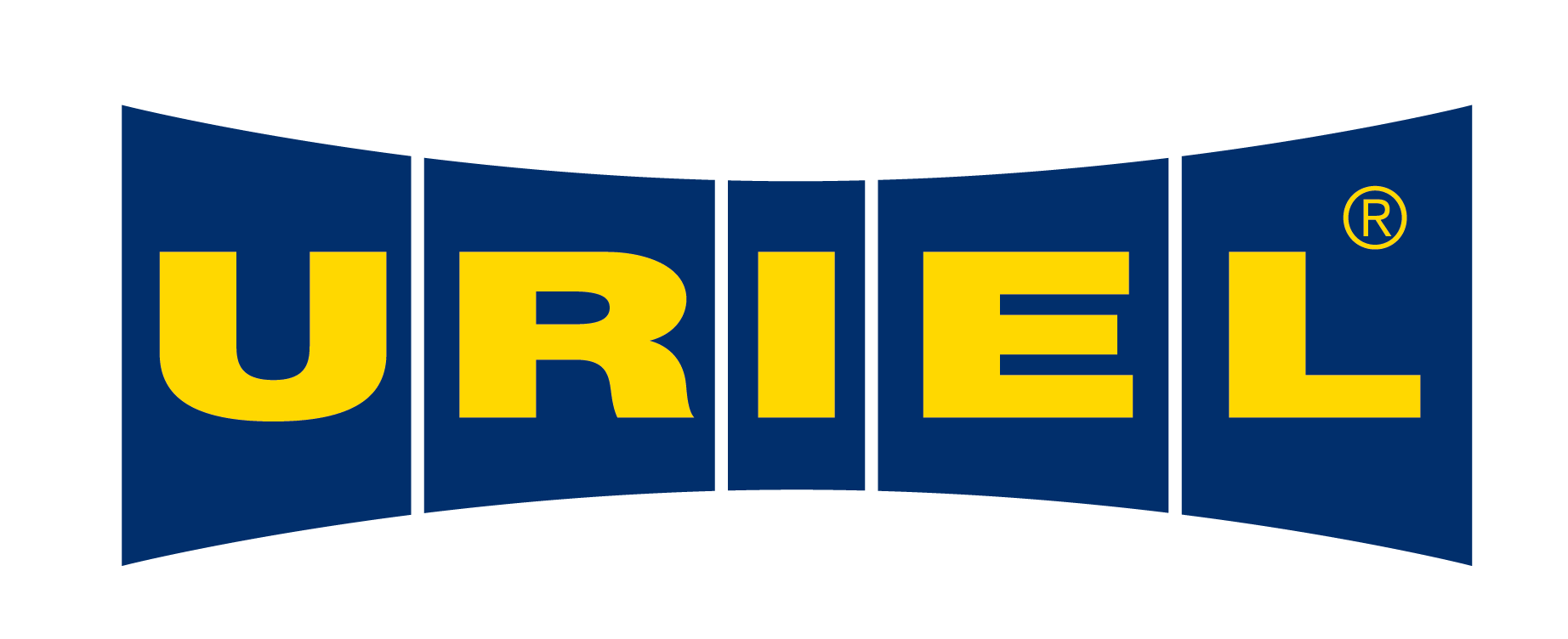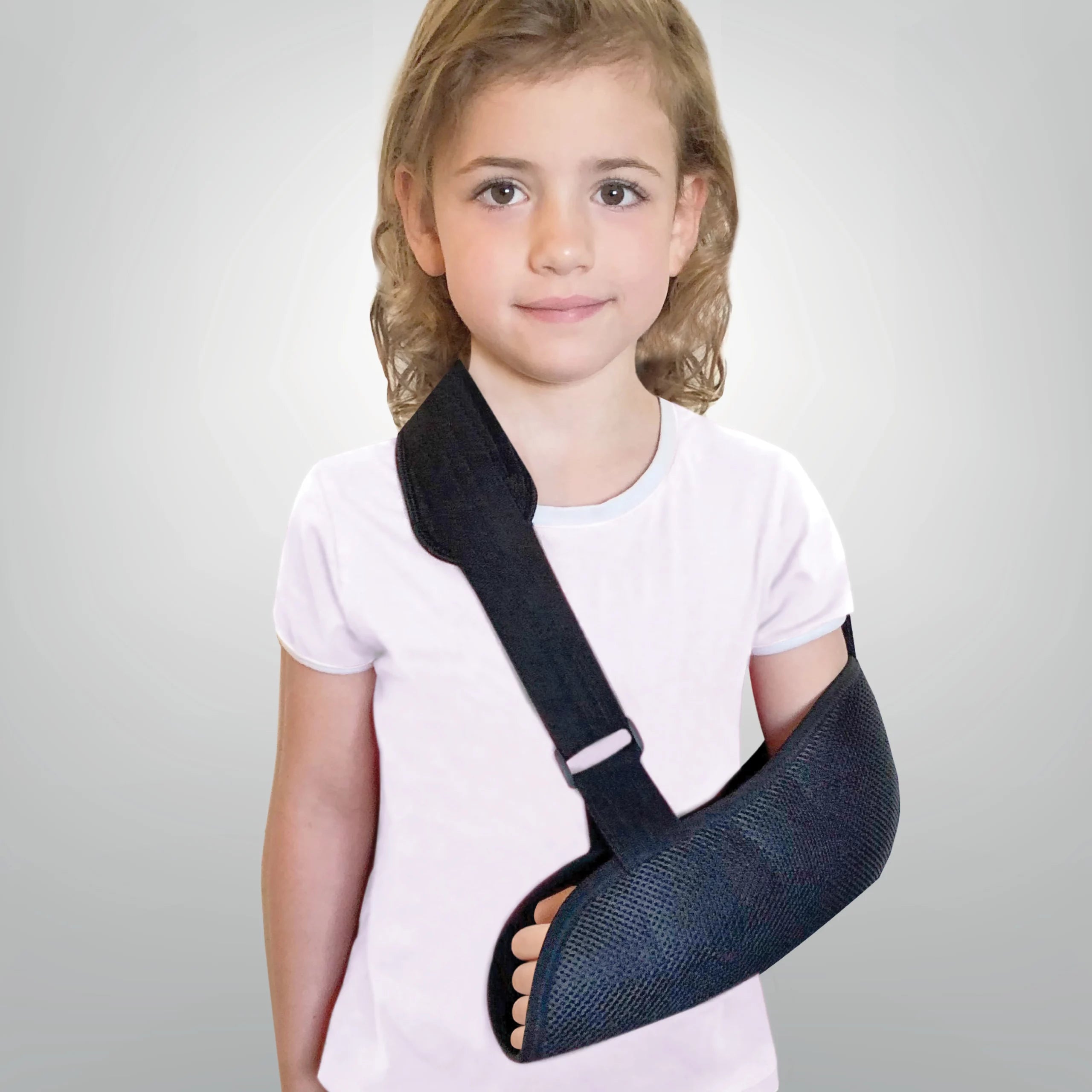
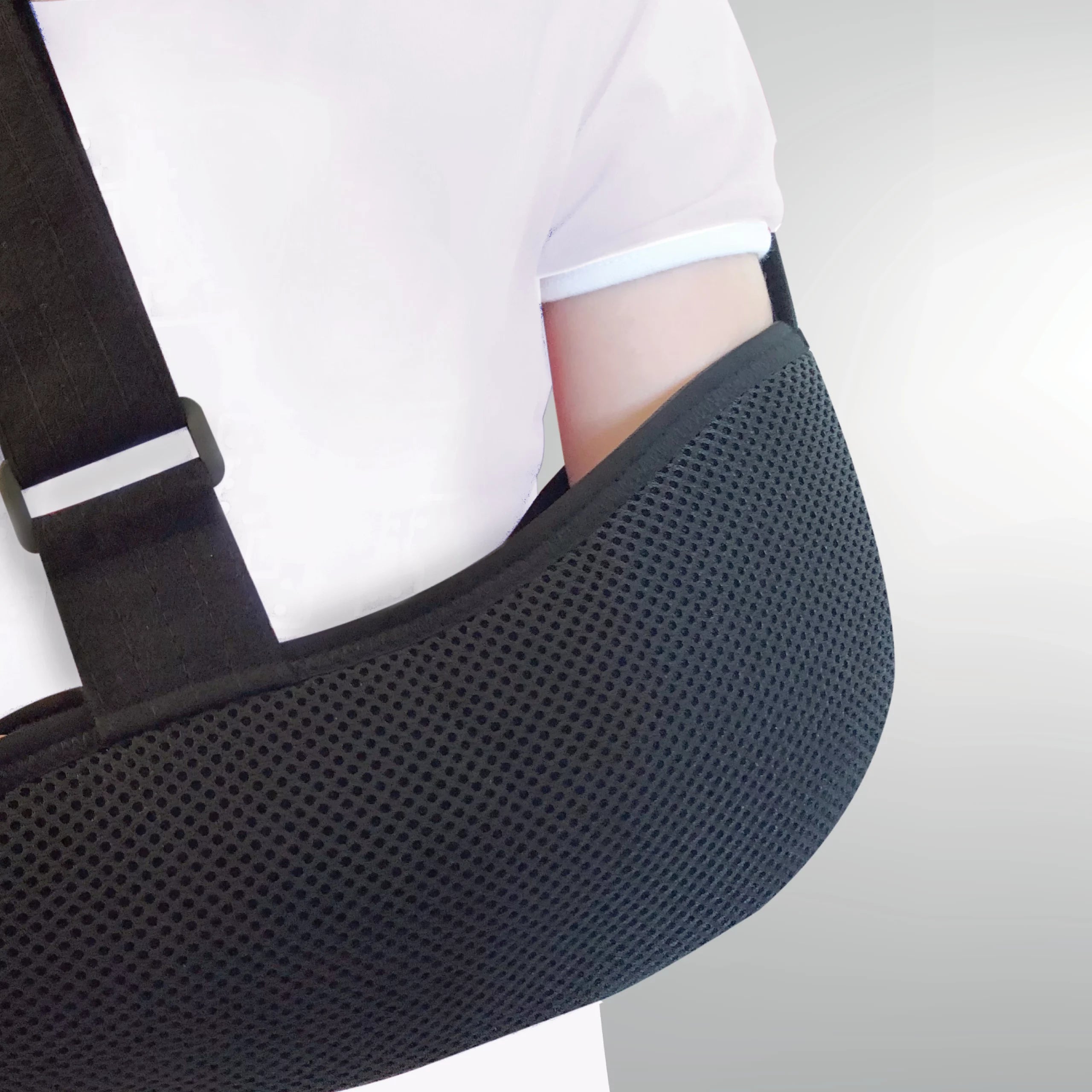
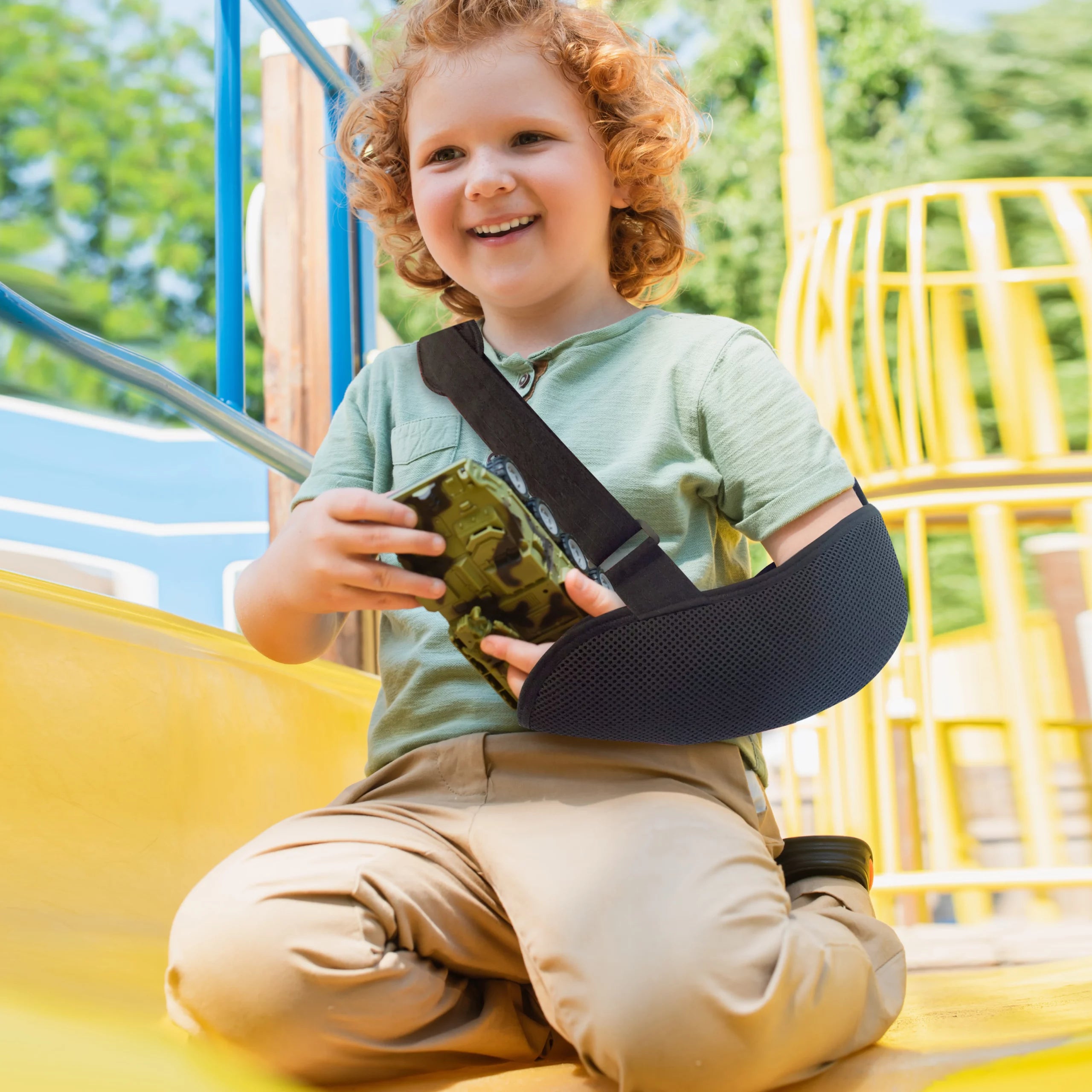
Pocket rack for children | 85K
Padded pocket arm sling adapted for children
Padded arm pocket designed for children, features an adjustable strap for optimal comfort. Can be used on the right or left.
Medical indications:
Fractures in the shoulder, arm, or forearm.
Conditions after shoulder dislocation or subluxation.
Injuries to the rotator cuff of the shoulder.
Before or after surgery on the shoulder, arm or forearm.
Pain due to inflammation of connective tissues, such as inflammation of tendons, ligaments, and muscles.

Dimensions

Extended description
Planning and design:
The sling is designed to support the weight of the forearm and arm while protecting the neck muscles. It is designed so that the weight-bearing strap passes over the opposite shoulder without placing stress on the neck. The sling keeps the forearm close to the body, with an even weight distribution and a secure position while keeping the shoulder in internal rotation, which relieves the ligaments of the joint.
Pain reduction:
The support of the sling reduces muscle work in the shoulder, arm, and forearm. Reducing muscle work relieves pain in the acute phase of the injury. The sling is not a fixation, but rather a primary protection. Its use provides a reminder to reduce the amount of movement and signals to those around you that you have pain in your hand, and that you should be careful around you.
Rehabilitation and recovery:
Reducing muscle work in the area of the injury allows for optimal positioning of the various bones and structures in the hand, and therefore results in better recovery of fractures, sprains, and acute injuries.
User manual
- The strap's Velcro fastener must be opened.
- Gently insert your hand into the pocket until your thumb enters its loop and your fingers emerge from the other side of the sleeve.
- It is recommended to do the next step in front of a mirror. Place the wide strap over your shoulder and close it with the clasp to the correct size: make sure your elbow is at a 90-degree angle, and both shoulders are at their natural height.
- It is recommended to ask the therapist when and for how long it is best to use the sling.
Our expert advice
- The use of the hand sling should be carried out in accordance with the instructions of a medical authority.
- It is recommended to use a sling for limited periods of time; immobilizing the shoulder for weeks may cause shortening of the muscles and ligaments.
- If there is no relief from the pain, or swelling and pain that were not there before occur, it is recommended to consult with the therapist to consider additional or different treatment.
- If you choose to use our arm sling for treatment, it is recommended that you perform appropriate physical activity at the same time. Here are some basic exercises recommended for your child:
- A. While sitting or standing, shrug your shoulders back and hold for 10 seconds.
- B. Gently rotate the neck in all directions for one minute.
- C. Rotate your wrist in all directions that do not cause pain for 5 minutes.
Active participation in games with friends can be positive and have a good effect on rehabilitation from an orthopedic injury, provided that it does not aggravate the condition or cause pain during or after it. You should consult your medical authority regarding participation in games that involve physical activity. Aerobic activity releases natural painkillers into the bloodstream, improves mood, speeds up blood flow in the body and therefore also speeds up the healing process.

Planning and design:
The sling is designed to support the weight of the forearm and arm while protecting the neck muscles. It is designed so that the weight-bearing strap passes over the opposite shoulder without placing stress on the neck. The sling keeps the forearm close to the body, with an even weight distribution and a secure position while keeping the shoulder in internal rotation, which relieves the ligaments of the joint.
Pain reduction:
The support of the sling reduces muscle work in the shoulder, arm, and forearm. Reducing muscle work relieves pain in the acute phase of the injury. The sling is not a fixation, but rather a primary protection. Its use provides a reminder to reduce the amount of movement and signals to those around you that you have pain in your hand, and that you should be careful around you.
Rehabilitation and recovery:
Reducing muscle work in the area of the injury allows for optimal positioning of the various bones and structures in the hand, and therefore results in better recovery of fractures, sprains, and acute injuries.
- The strap's Velcro fastener must be opened.
- Gently insert your hand into the pocket until your thumb enters its loop and your fingers emerge from the other side of the sleeve.
- It is recommended to do the next step in front of a mirror. Place the wide strap over your shoulder and close it with the clasp to the correct size: make sure your elbow is at a 90-degree angle, and both shoulders are at their natural height.
- It is recommended to ask the therapist when and for how long it is best to use the sling.
- The use of the hand sling should be carried out in accordance with the instructions of a medical authority.
- It is recommended to use a sling for limited periods of time; immobilizing the shoulder for weeks may cause shortening of the muscles and ligaments.
- If there is no relief from the pain, or swelling and pain that were not there before occur, it is recommended to consult with the therapist to consider additional or different treatment.
- If you choose to use our arm sling for treatment, it is recommended that you perform appropriate physical activity at the same time. Here are some basic exercises recommended for your child:
- A. While sitting or standing, shrug your shoulders back and hold for 10 seconds.
- B. Gently rotate the neck in all directions for one minute.
- C. Rotate your wrist in all directions that do not cause pain for 5 minutes.
Active participation in games with friends can be positive and have a good effect on rehabilitation from an orthopedic injury, provided that it does not aggravate the condition or cause pain during or after it. You should consult your medical authority regarding participation in games that involve physical activity. Aerobic activity releases natural painkillers into the bloodstream, improves mood, speeds up blood flow in the body and therefore also speeds up the healing process.
Blog
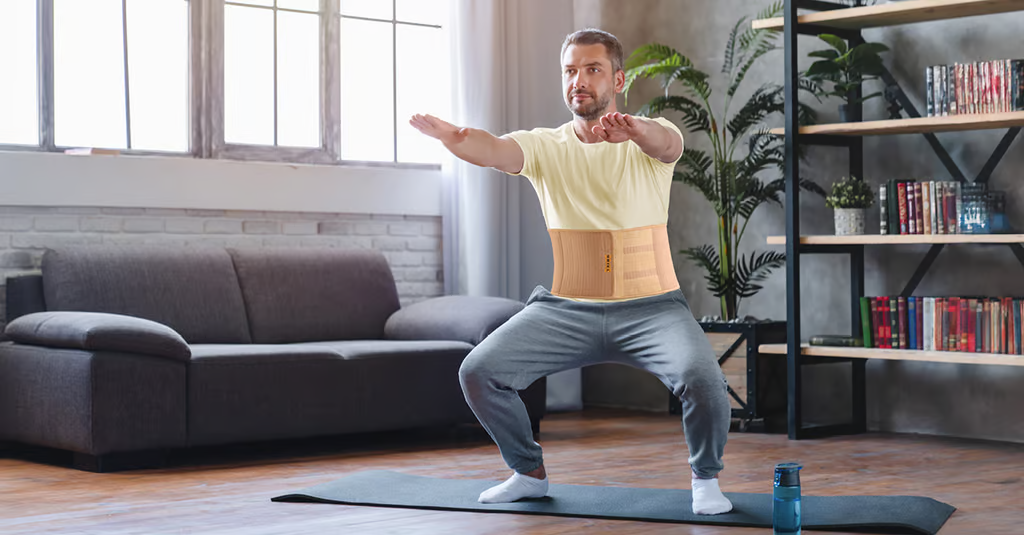
Treating Lower Back Pain: 6 Tips to Improve Quality of Life
Suffering from lower back pain? You are definitely not alone. There are many ways to deal with one of the most common pains in the world, here are some of them. It's time to relieve the pain.
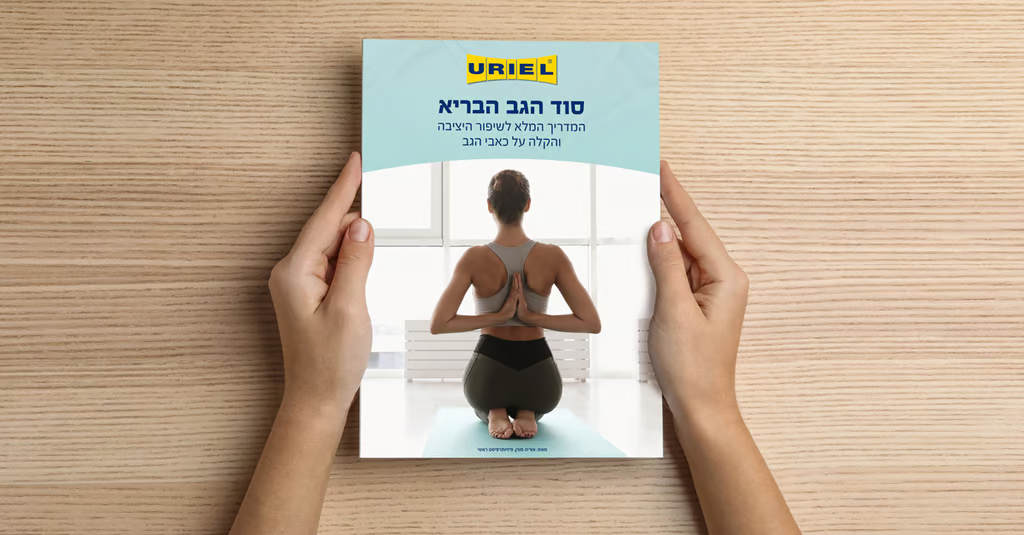
The Secret to a Healthy Back: The Complete Guide to Improving Posture and Alleviating Back Pain
Is back health important to you? Get the 'Secret of a Healthy Back' guide containing information, tips and useful advice for relieving back pain. By Oriya Moran, Chief Physiotherapist Download t...
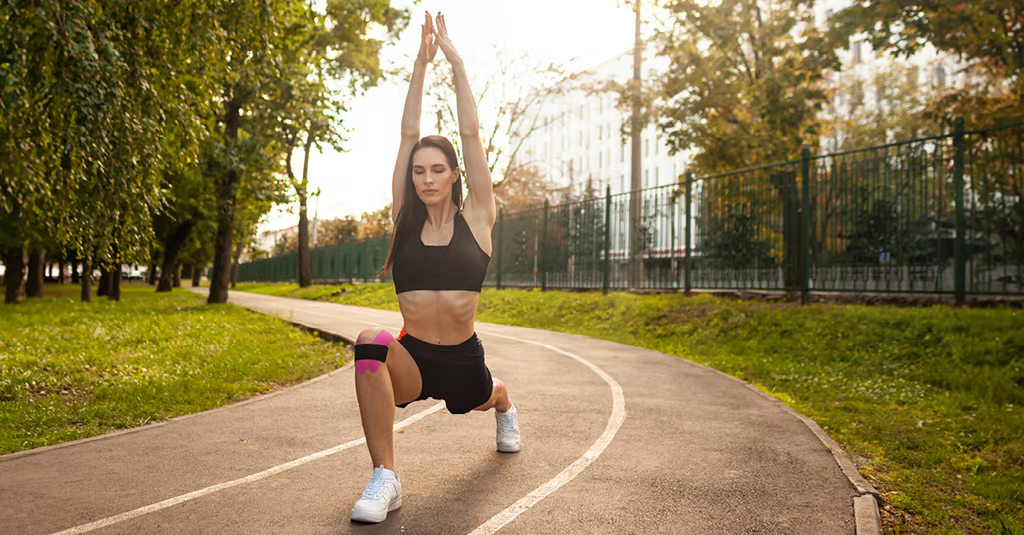
Kinesio tape or professional elastic bandage?
Suffering from sports injuries, bruises or simply pain caused by medical problems? Get to know the variety of dressing products that will support you. When should we use kinesiology tape and why d...
